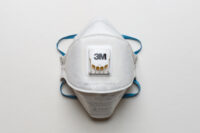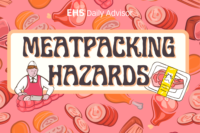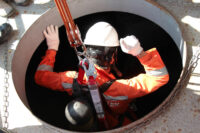No safety technology is changing as fast as that employed in PPE. The devices of just a few years ago are now obsolete by replacements that are lighter, easier to use, and more protective. These resources alert you to developments in the field, and equally important, supply training ideas to get your workers to use their PPE, and use it correctly.
Free Special Report: Does Your PPE Program Meet OSHA’s Requirements?
Millions of employees are required to wear respirators, and compliance with OSHA’s respiratory protection standard can help avoid thousands of illnesses and hundreds of deaths every year. OSHA provides seven steps on how to wear a respirator correctly at work. Here’s what you need to know about how to wear a respirator. Check out our Back to Basics: […]
On November 28, the National Institute for Occupational Safety and Health (NIOSH) asked for public comment on its program for certifying approved respiratory protection devices. NIOSH is authorized by the Occupational Safety and Health Act of 1970 and Mine Safety and Health Amendments Act of 1977 to test and approve respirators used by construction workers, […]
Back to Basics is a weekly feature that highlights important but possibly overlooked information that any EHS professional should know. This week, we examine OSHA’s requirements for respiratory protection. Respiratory protection is important in many different industries, and it has played an even greater role in the workforce since the beginning of the COVID-19 pandemic. […]
Employees in the meatpacking industry are exposed to a number of different health and safety hazards on a regular basis. According to OSHA, these hazards include exposure to high noise levels, dangerous equipment, slippery floors, musculoskeletal disorders (MSDs), and hazardous chemicals. Workers also face biological hazards from handling live animals or exposures to blood or feces […]
Back to Basics is a weekly feature that highlights important but possibly overlooked information that any EHS professional should know. This week, we examine OSHA’s standards for confined spaces. Confined spaces are defined by OSHA as spaces that are not necessarily designed for people, but are large enough that workers can go inside and perform […]
On episode 126 of EHS On Tap, Derek Sang, technical training manager at Bulwark, talks about Common Myths and Misconceptions about flame-resistant clothing. This episode is sponsored by Bulwark.
Personal protective equipment (PPE) for contractors is essential to ensure that workers remain safe and minimize any potential harm. It serves as one of the most important steps that enables workers to conduct operations safely and prevent any injury that may result in time off, increased liability, job restrictions, and other productivity-hindering occurrences. Both hiring […]
On episode 124 of EHS On Tap, Dan Glucksman, Senior Policy Director at the International Safety Equipment Association, talks about using PPE to mitigate heat stress.
Different respirators clearly function differently, offering users two types of respiratory protection. Filtering facepiece respirators (FFR), like N95s and P100s, filter out particles like the SARS-CoV-2 virus that causes COVID-19 and the particulate matter in wildfire smoke. Other respirators supply clean respirable air. For example, airline respirators use compressed air from a remote source, and […]
Back to Basics is a weekly feature that highlights important but possibly overlooked information that any EHS professional should know. This week, we examine work-related asthma and NIOSH’s recommendations for prevention. Asthma is a lung condition in which the airways become narrow and inflamed, and it is accompanied by episodes of wheezing, chest tightness, shortness […]










